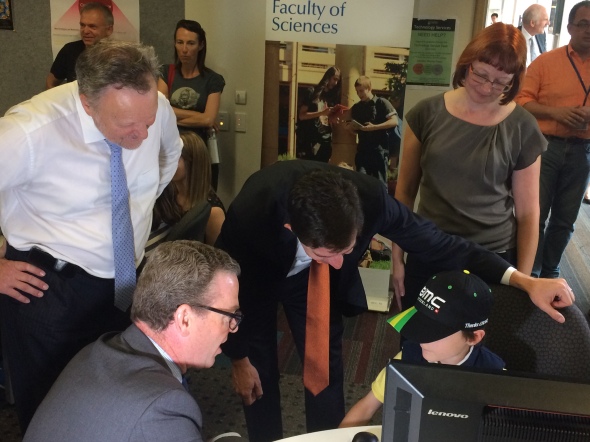More on the #ATAR, @birmo looks to the Higher Education Standards Panel
Posted: February 11, 2016 Filed under: Education | Tags: advocacy, ATAR, authenticity, community, education, educational problem, educational research, ethics, higher education, reflection, resources, tertiary admittance, tools 1 CommentThe Federal Education Minister, Senator Simon Birmingham, appears as concerned over the disconnect between the Australian Tertiary Admission Rank (ATAR) and university entry as I am. In his own words, students must have “a clear understanding of what they need to do to get into their course of choice and realising what will be expected of them through their further study.”
This article covers some of the issues already raised over transparency and having a system that people work with rather than around.
“While universities determine their own admission requirements, exploring greater transparency measures will ensure that Australian students are provided real information on what they need to do to be admitted to a course at a particular institution and universities are held to account for their public entry requirements,” Senator Birmingham said.
Ensuring that students are ready for university but it’s increasingly obvious that this role is not supported or validated through the current ATAR system, for a large number of students. I look forward to see what comes from the standards panel and I hope that it’s to everyone’s benefit, not just a rejigging of a number that was probably never all that representative to start with.

Senator Birmingham, Minister Pyne, Professor Bebbington (VC of Adelaide) and A/Prof Katrina Falkner with one of the Bright Spark participants.
Perhaps I should confess that I would like a system where any student could get into University (or VET or TAFE or whatever tertiary program they want to) but that we build our preparatory and educational systems to support this happening, rather than just bringing people in to watch them fail. Oh, but a boy can dream.
It’s not just GPAs
Posted: February 10, 2016 Filed under: Education | Tags: advocacy, aesthetics, ATAR, authenticity, balance, community, education, educational problem, educational research, ethics, fairness, GPA, higher education, resources, student perspective Leave a commentIf you’re watching the Australian media on higher education, you’ll have seen a lot of discussion regarding the validity of the Australian Tertiary Admission Rank (ATAR) as a measure of a student’s future performance and as an accurate summary of the previous years of education.

When you are being weighed in the balance, you probably want to know a lot about the scale and the measures.
This article, talking about students being admitted below the cut-offs, contains a lot of discussion on the issue. Not all of the discussion is equally valuable, in my opinion, as the when the question is the validity of the measure, being concerned about ‘standards slipping’ when a lower number is used isn’t that relevant. The interesting parts of the discussion are which mechanisms we should be using and making them transparent so that all students are on a level playing field.
The fact is that students are being admitted to, and passing, courses that have barriers in place which should clearly indicate their chances of success. Yet students are being admitted based on other pathways, using additional measures such as portfolios, and this makes a bit of a mockery on the apparent simplicity of the ATAR system.
My own analysis of student ATAR versus GPA is revelatory: the mapping is a very noisy correlation and, apart from the very highest ATARs, we see people who succeed or fail in a way that does not match their representative ATAR. Yes, there are rough ‘buckets’ but at a granularity of fewer than five buckets, rather than the thousand or so we’re pretending to have.
“Reducing six years of education to a single ranking is simplistic, let’s have a constructive debate about what could replace the ATAR alone as a fairer, more comprehensive and contextual measure of academic potential”.
Iain Martin, from this linked opinion piece.
I couldn’t agree more!
